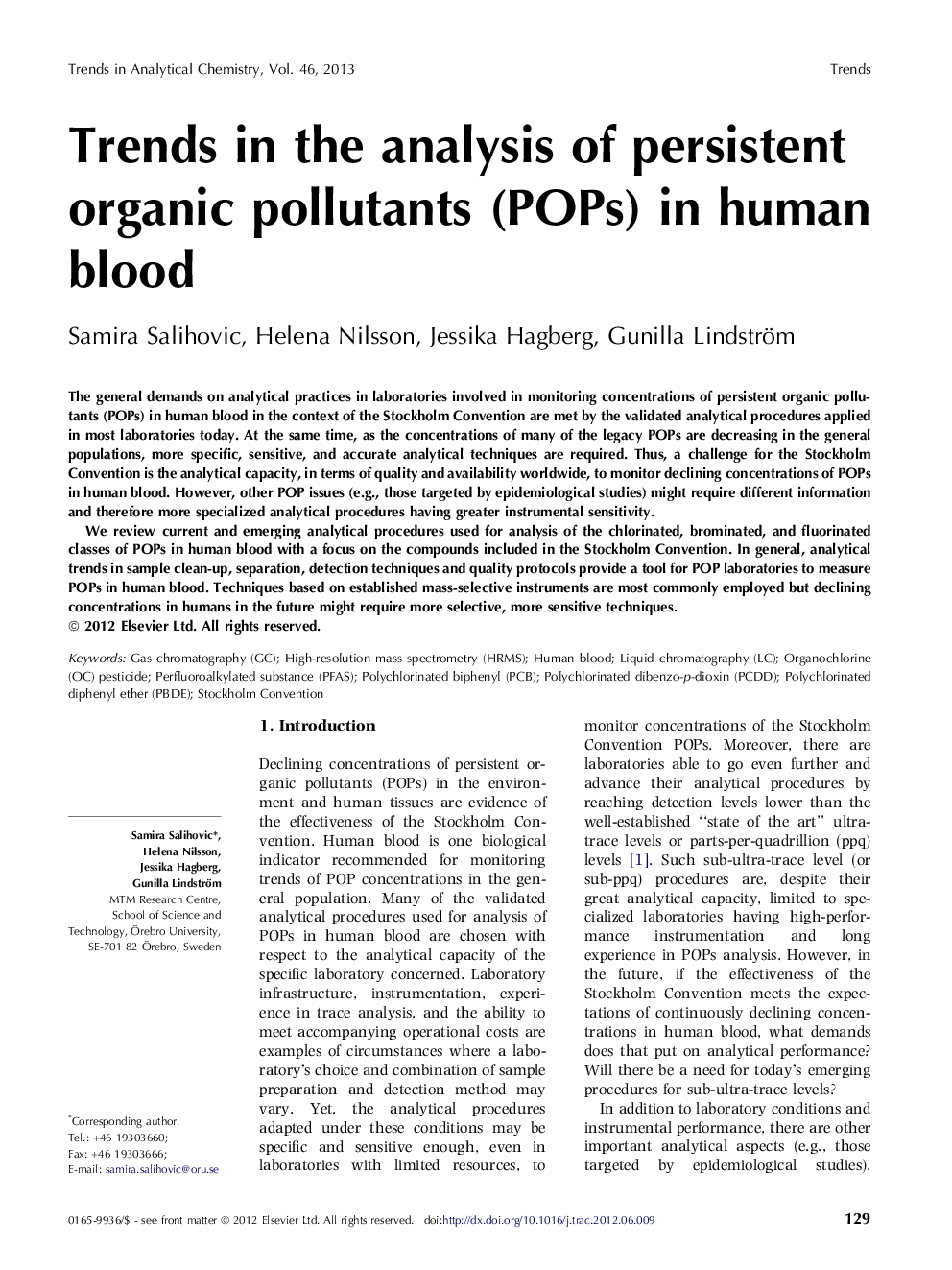| Article ID | Journal | Published Year | Pages | File Type |
|---|---|---|---|---|
| 1247917 | TrAC Trends in Analytical Chemistry | 2013 | 10 Pages |
The general demands on analytical practices in laboratories involved in monitoring concentrations of persistent organic pollutants (POPs) in human blood in the context of the Stockholm Convention are met by the validated analytical procedures applied in most laboratories today. At the same time, as the concentrations of many of the legacy POPs are decreasing in the general populations, more specific, sensitive, and accurate analytical techniques are required. Thus, a challenge for the Stockholm Convention is the analytical capacity, in terms of quality and availability worldwide, to monitor declining concentrations of POPs in human blood. However, other POP issues (e.g., those targeted by epidemiological studies) might require different information and therefore more specialized analytical procedures having greater instrumental sensitivity.We review current and emerging analytical procedures used for analysis of the chlorinated, brominated, and fluorinated classes of POPs in human blood with a focus on the compounds included in the Stockholm Convention. In general, analytical trends in sample clean-up, separation, detection techniques and quality protocols provide a tool for POP laboratories to measure POPs in human blood. Techniques based on established mass-selective instruments are most commonly employed but declining concentrations in humans in the future might require more selective, more sensitive techniques.
► Current analytical techniques provide a tool for laboratories to measure POPs in human blood. ► Techniques based on SPE and mass-selective detectors are most common. ► Declining levels of POPs in humans might require more sensitive instruments. ► The overall quality of data from POPs analysis in human blood is satisfactory.
